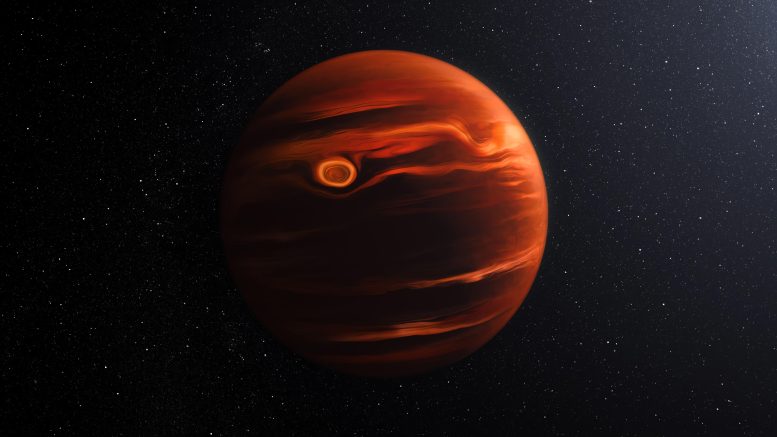
Researchers observing with NASA’s James Webb Space Telescope have pinpointed silicate cloud features in a distant planet’s atmosphere. The atmosphere is constantly rising, mixing, and moving during its 22-hour day, bringing hotter material up and pushing colder material down. The resulting brightness changes are so dramatic that it is the most variable planetary-mass object known to date. Credit: NASA, ESA, CSA, Joseph Olmsted (STScI)
The Artemis II Moon rocket is coming together …
A high honor for some space explorers …
And an intriguing find for the Webb Space Telescope … a few of the stories to tell you about – This Week at NASA!
Artemis II Moon Rocket Coming Together
The core stage of the Space Launch System (SLS) rocket for NASA’s Artemis II mission is coming together at NASA’s Michoud Assembly Facility. Teams recently added the engine section and will complete the stage by installing four RS-25 rocket engines. Artemis II will be the first Artemis flight around the Moon and back with astronauts.
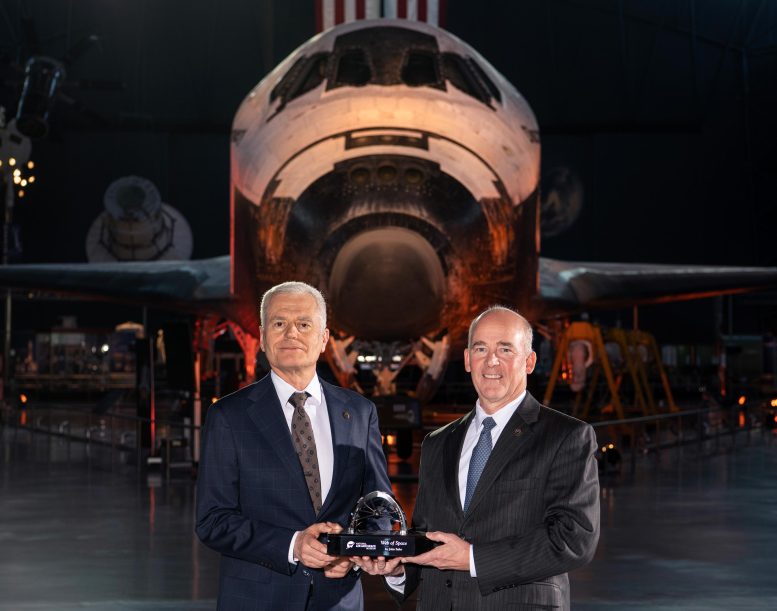
Mark Clampin, director of the Astrophysics Division at NASA Headquarters, accepts the 2023 Michael Collins Trophy for Lifetime and Current Achievements from Christopher Browne, John and Adrienne Mars Director of the Smithsonian’s National Air and Space Museum. The trophy was awarded to the team behind NASA’s James Webb Space Telescope in a ceremony at the museum’s Steven F. Udvar-Hazy Center in Chantilly, Virginia, on March 23, 2023. Credit: Smithsonian’s National Air and Space Museum
Bill Anders, Webb Telescope Team Awarded Michael Collins Trophy
During a March 23 ceremony, the Smithsonian’s National Air and Space Museum awarded its Michael Collins Trophy for Lifetime Achievement and for Current Achievement to former NASA astronaut Bill Anders, and to the James Webb Space Telescope Team, respectively. Anders took the famous Earthrise photograph on the Apollo 8 Moon mission, and the recently deployed Webb telescope is already giving astronomers an increased understanding of the universe.
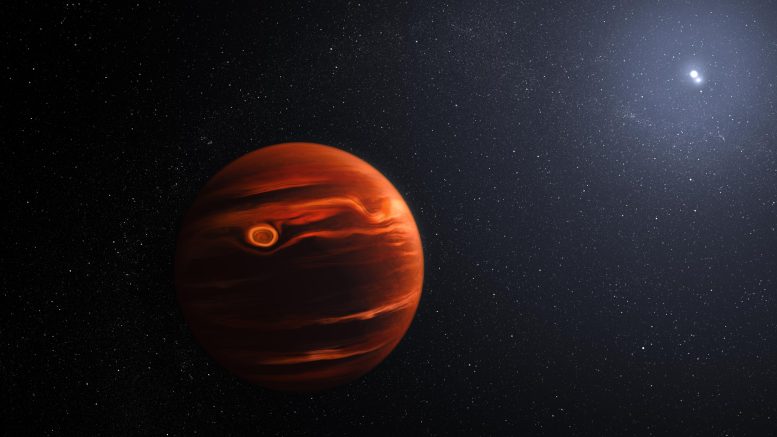
This illustration conceptualizes the swirling clouds identified by the James Webb Space Telescope in the atmosphere of exoplanet VHS 1256 b. The planet is about 40 light-years away and orbits two stars that are locked in their own tight rotation.
Its clouds are constantly rising, mixing, and moving during its 22-hour day. Plus, they’re filled with silicate dust. Some clouds contain silicate grains as tiny as smoke particles. Others contain slightly larger flecks that are similar to small grains of sand. Researchers detected both brighter and darker cloud patches, indicating some clouds are lower and hotter or higher and cooler than others, respectively. Credit: NASA, ESA, CSA, Joseph Olmsted (STScI)
Webb Spots Swirling, Gritty Clouds on Remote Planet
The Webb Space Telescope has spotted a planet about 40 light-years from us with silicate cloud features in its swirling atmosphere. The telescope also detected water, methane, and carbon monoxide, as well as evidence of carbon dioxide. This is the largest number of molecules ever identified all at once on a planet outside our solar system.
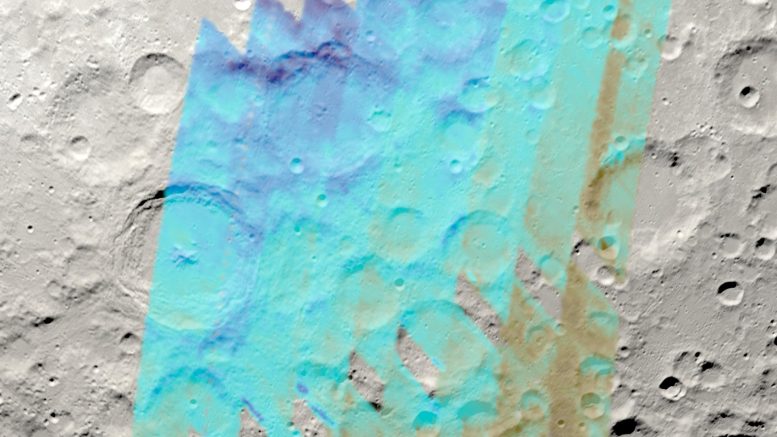
A still image of the Moon and the northern portion of the SOFIA water data. Credit: NASA’s Goddard Space Flight Center Scientific Visualization Studio/Ernie Wright
Study Reveals Map of Water Near Moon’s South Pole
A new study using data from the recently retired SOFIA flying observatory has resulted in the first detailed, wide-area map of water distribution on the Moon. The study provides hints about how water may be moving across the lunar surface near the Moon’s South Pole — an important area of exploration for future Artemis missions.
That’s what’s up this week @NASA




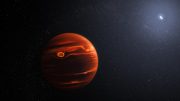

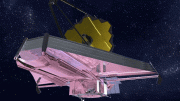
Be the first to comment on "This Week @NASA: Artemis II Moon Rocket, Moon Water Map, Gritty Clouds on Remote Planet"